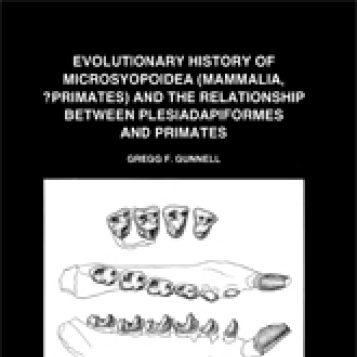27. The Evolutionary History of Microsyopoidea (Mammalia, ?Primates) and the Relationship between Plesiadapiformes and Primates

Gregg F. Gunnell
Plesiadapiformes is the first group of primate-like mammals known in the fossil record. Plesiadapiformes first appear in the Paleocene (Puercan Land Mammal Age) in sediments of the Western Interior of North America. The relationship of Paleocene plesiadapiforms to Eocene primates of modem aspect (euprimates) and relationships among various families, genera, and species of plesiadapiforms are uncertain. In particular, the relationship of Microsyopoidea to plesiadapiforms has been questioned. Morphological and functional studies of dental and cranial remains of plesiadapiforms presented in this study indicate that there is no direct relationship between plesiadapiforms and euprimates. Plesiadapiformes are retained, questionably, in the order Primates, based solely on gradistic considerations. Dental evidence suggests that plesiadapiforms are more closely related to fossil "dermopterans" (Plagiomenidae) than either group is to euprimates. Microsyopoids are distinctly primitive in a number of dental and cranial features, but are more closely related to plesiadapoids than to any other group. (Go to the link and see more of this paper.)
Publisher: University of Michigan
Month of Publication: November
Year of Publication: 1989
Location: Ann Arbor, MI
Volume Number: 27
# of Pages: 157

